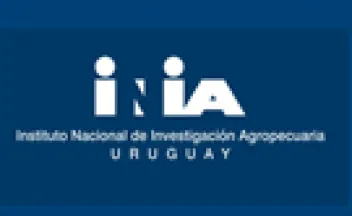Instituto Nacional de Investigación Agropecuaria
Integrating no-till into crop-pasture rotations in Uruguay:review.

Abstract Crop pasture rotations (CPR) are unusual around the world but have been the predominant cropping system in Uruguay since the 1960s. Uruguay has a temperate sub-humid climate, 80% of its landscape (16 Mha) is climax grasslands C3 and C4 species. Beef, wool, and dairy are the main commodities. Crops occupy a portion of the remaining 20% land area, primarily on Argiudolls and Vertisols, rotated with seeded grass and legume pastures. Continuous cropping (CC) with conventional tillage (CT) has proven unsustainable due to decreased soil productivity.
Integrating no-till into crop-pasture rotations in Uruguay: review.

Abstract Crop pasture rotations (CPR) are unusual around the world but have been the predominant cropping system in Uruguay since the 1960s. Uruguay has a temperate sub-humid climate, 80% of its landscape (16 Mha) is climax grasslands C3 and C4 species. Beef, wool, and dairy are the main commodities. Crops occupy a portion of the remaining 20% land area, primarily on Argiudolls and Vertisols, rotated with seeded grass and legume pastures. Continuous cropping (CC) with conventional tillage (CT) has proven unsustainable due to decreased soil productivity.
Behaviour response to two-step weaning is diminished in beef calves previously submitted to temporary weaning with nose flaps.

Abstract: Temporary weaning (TW) of beef calves for 5?14 days is a husbandry practice that is frequently used to help advance rebreeding in postpartum cows. The aim of this study was to compare the behaviour response to two-step weaning with the use of nose flaps, in beef calves that had or not been submitted to TW with nose flaps during the breeding period.
Effect of nutritional management during the postpartum period of primiparous autumn-calving cows on dam and calf performance under range conditions.

Abstract: The aim of this study was to evaluate the effects of different winter nutritional management regimens in primiparous, autumn-calving heifers on dam and calf performance. In experiment 1, 41 Aberdeen Angus ×Hereford fall-calving beef heifers grazed native pastures (NP) for 78 days postpartum (pp) when they were assigned to one of two treatments during 94 days of winter:(i) grazing NP (NP; n= 21); (ii) grazing improved pastures with Lotus subbiflorus (IP, n= 20). Calves were weaned when dams reached 203 days pp and cows were artificially inseminated (AI) at 237 days pp.
Paginación
- Página anterior
- Página 476
- Siguiente página
